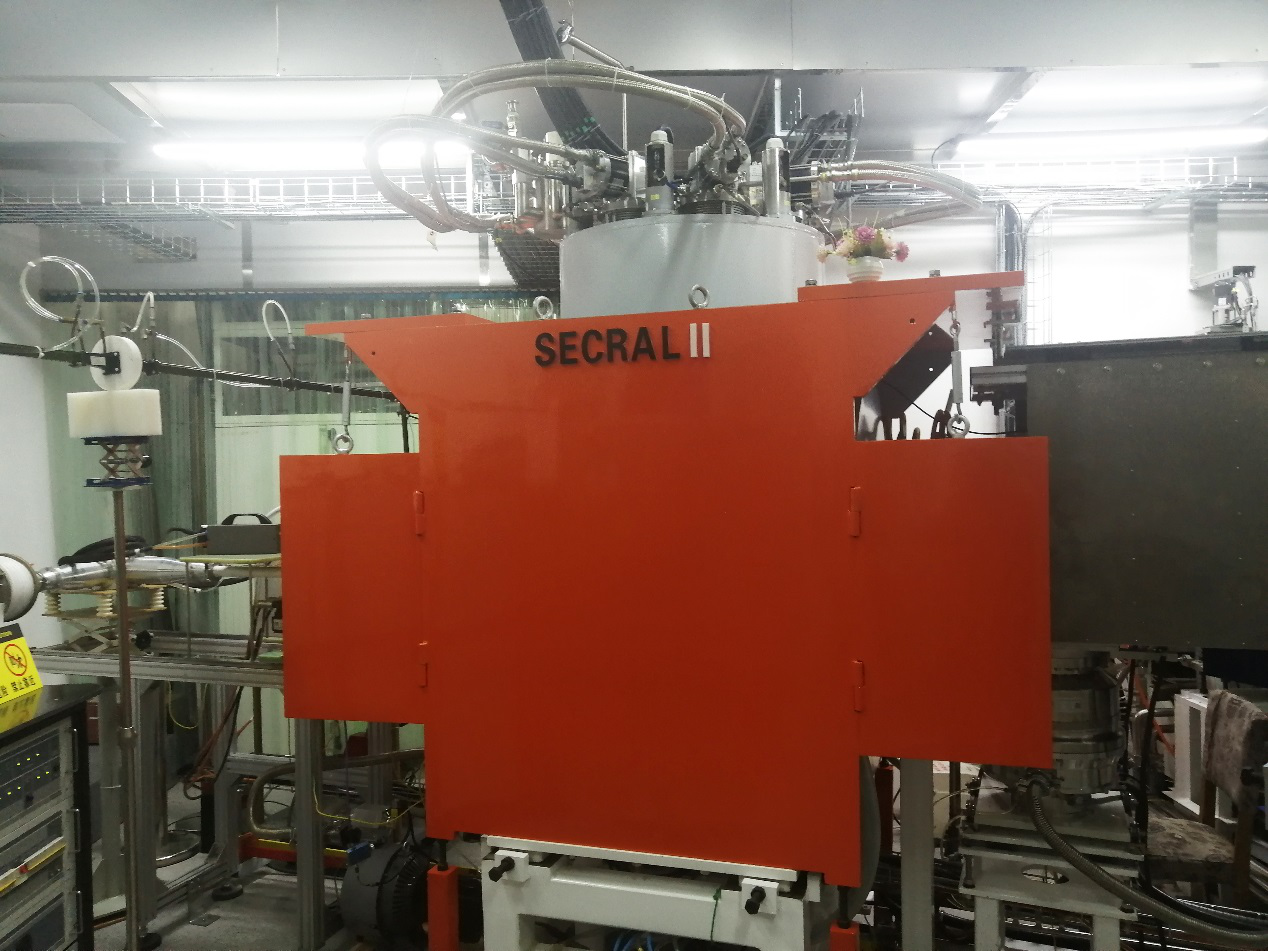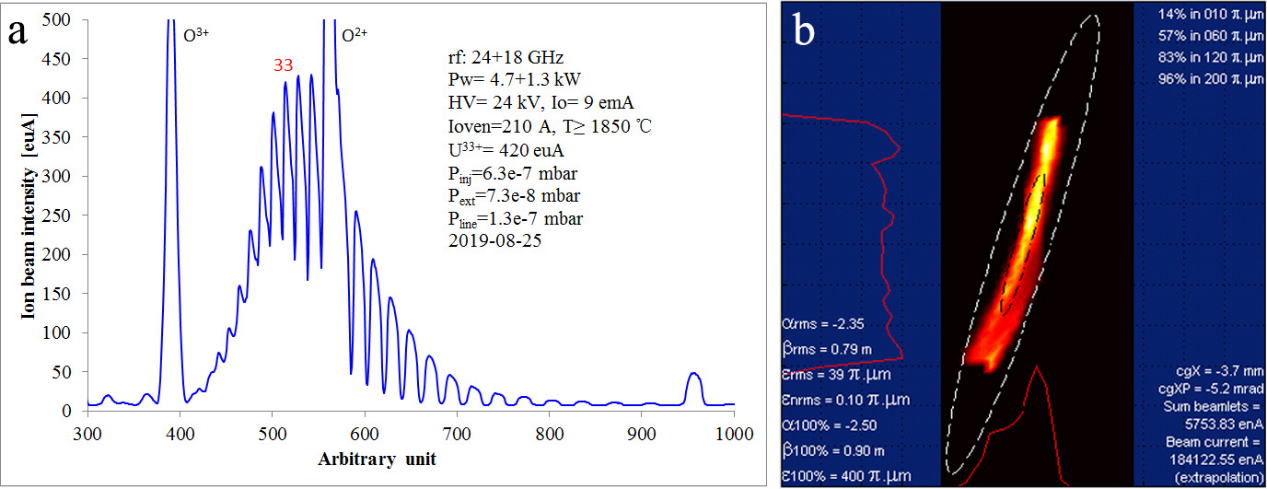Researchers Set New World Records of Beam Intensity of Highly Charged Uranium Ions
Research in nuclear reaction plays a vital role in our quest to understand microstructures of atomic nuclei and the mechanisms involved in their interactions. However, some important nuclear reactions have extremely small cross sections. To make fundamental progress in nuclear physics experiments, the key is to have high current heavy ion beams from the accelerator, and thus it is essential to have a high intensity highly charged heavy ion source.
Recently, the ion source group at the Institute of Modern Physics (IMP) of the Chinese Academy of Sciences has set a series of world records on intense highly charged uranium ion beams production with a superconducting Electron Cyclotron Resonance (ECR) ion source.
With an inductive heating oven and 24+18 GHz double frequency heating technology, some world-record results were produced, such as 450 eμA of U33+, 60 eμA of U42+ and 2.6 eμA of U54+.
Superconducting ECR ion source is a magnetically confined plasma device that can produce intense highly charged ion beams. The highly charged uranium ion beams used in the research were produced by SECRAL-II, which was developed independently by IMP and was one of the best performing ECR ion sources for highly charged ion beams in the world. SECRAL sources have made most of beam intensity world records of highly charged heavy ions, except for the production of uranium ion beams.
After years of hard work, the research group successfully developed an inductive heating oven in 2019. It can work stably at a temperature over 2000 degrees for a long time with high magnetic field (up to 3 T in ECR ion source), which ensured the stable supply of uranium vapor to ECR plasma.
Furthermore, a Vlasov-type microwave power launcher was firstly applied to the superconducting ECR ion source, which improved the microwave power distribution for ECR plasma heating and increased the coupling efficiency between microwave and plasma. The resulting plasma electron density distribution and power distribution were optimized for the production of highly charged ions. With essentially the same microwave power, the ion beam intensities were increased by 13% to 30%.
The group members presented these results in two invited and one contributed oral talks at the 18th International Conference on Ion Sources (ICIS 2019) in September, and received extensive attention. In the conclusion remarks made by Dr. Nakagawa from RIKEN, the aforementioned works were listed as highlights of the conference. At this conference, Dr. Guo Junwei was awarded the Young Scientist Award for the best oral presentation of his great work on microwave coupling and novel microwave feeding methods.
This research was supported by CAS Large Scientific Equipment Maintenance and Renovation Project, National Natural Science Foundation of China and National Key Basic Research Program of China.

Figure 1. SECRAL-II source with 24+18GHz microwave coupling (Image by Zhang Wenhui)

Figure 2. CSD spectrum with the source optimized for 420eμA 238U33+ and the corresponding horizontal beam emittance (Image by the ion source group of IMP)
Contact :
LIU Fang
Institute of Modern Physics
Email: fangliu@impcas.ac.cn
Reference
Scientists Report Heavy Ion Transfer in Charged vdW Cluster for the First Time
It has been recognized that proton transfer is crucial to many chemical and biological processes. As these processes are known to be relevant to biophysics and radiation therapy, a question arises whether a massive ion could be transferred in biochemical processes and lead to fragmentation. Published in Nature Communications on June 12th, a new study helps address the above questions.



 甘公网安备 62010202000713号
甘公网安备 62010202000713号


